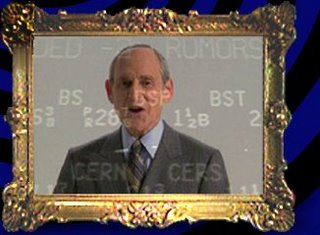What is High Yield? Tax Equivalent Yield at the 5.68% Level
 So what is "high yield"? Rather than looking at "Junk Bonds" and other exotic bargains, looking at run of mill, lower yielding secuirties my help put a finer point on the theme of The Yield Hoe, and considering after tax returns may make it even more clear.
So what is "high yield"? Rather than looking at "Junk Bonds" and other exotic bargains, looking at run of mill, lower yielding secuirties my help put a finer point on the theme of The Yield Hoe, and considering after tax returns may make it even more clear.It's benchmark time, which is to say it's time to review yields and the risk tradeoff for various securities "out there". A good place to start is to look at the tax equivalent yields on municipal bonds, which are nearly risk free of default vs. other taxable government securities, which are totally risk free (treasury bills, notes and bonds). The question is how do muni yields stack up to the yields on other bonds. So it's best to look at non government bonds too, which are not so free of default risk (asset backed, corporate bonds and notes-- think Enron bonds).
What sets Munis apart is a return that is free from federal, state and local taxes (in most cases). For a quick review, see "Poppy" Lebenthal's outstanding, memorable and low budget TV commercials touting Municipal bonds, or as he put it, "not paper", but the "tunnels and waterworks, the nuts and bolts that make New York work!" (shot by AMI). Note the double breasted suit, and the 6.25% yield on the 10 year.
The best place to look for this information in my book (or blog) is the Rates page on "Bloomie", or Bloomberg.com. The page will show you what all types of bonds are yielding, including municipal bonds, along with graphical yield curves for each, or charts showing the various yields of these bonds over different terms. Of course, there are a few othere places to look online if you want to drill down into the current yields on Munis, including The Bond Market Association's investinginbonds.com, which also has a calculator showing state specific yields, as well as The Bond Buyer
So what's showing? Right now, minis are yielding in the neighborhood of 3.69% range on the so called shoulder of the curve, or 7 years out, meaning you can park your cash into a portfolio of 7 year munis and can expect to earn 3.65 to 3.70% per year. Before you snicker such low returns, consider what you'll keep.
Other taxable bonds are yielding 5.19%, which is less than you'll earn on Muni bonds from an after tax point of view if you pay 35% tax on ordinary income. After the tax chop, you'd have to earn more than 5.68% after tax to beat Muni bond yields. If you can not find an investment that yields more than 5.68% with a very very good chance of continuing to pay its dividend, then experts will tell you that Munis are a better alternative to most government bonds, which yield less after tax time.
There is, of course a formula to find the "tax equivalent yields" of Municipal bonds versus other debt and dividend paying securities. There are also very good online calculators that yield investors should bookmark for the purpose, here, here, and here.
The formula as furnished by Moody's is as follows:
Tax equivalent yields when you want to compare a municipal/non taxable return with that of a taxable bond. To do that, take the municipal bond yield and divide it by 1 minus the taxpayers tax bracket
6% municipal yield
30% investor tax bracket
.06/1-.30= .06/.7= 8.57% That means, everything else being equal (it never is, though) that it would make no difference to an investor buying either a 6% tax free bond or a taxable 8.57% bond since they would both produce the same net return. (I have not addressed other issues of risk, however.)
Still not jazzed by 3.68% after taxes? Consider the risks too. Munis, almost like treasuries just don't default. While credit ratings change, and yields adjust higher for more risk, they nearly never default, leaving no risk to the money you park there if held to maturity.Still not sold on munis? And "10 NY Tribes" just have the appeal of cold grits in your mouth? Well, then, you're in the right place. We jackasses too search for greater gains from securities offering higher yields. But more than this, it's important to see if there is a very very good chance that they continuing to pay dividends at these higher levels, wherein, doth sit the dread and fear of kings. So you'll always have to decide for yourself whether it is really worth parking your cash into something that is almost by definition more risky to your money than municipal bonds, but perhaps less risky than betting 10 dimes on the Bears, no matter how good they look.
Municipals nearly never default; and while treasuries have never defaulted-- 0%, "nearly" her means a less than 1% default rate, so it's pretty damn close to "riskless".
There aren't many companies with such a track record with dividends that safe, and so it is important that investors insist on being compensated for the added risk they take when reaching for high yield investments, greater than the tax adjusted yields of municipals (5.50 to 6% in the current market).


0 Comments:
Post a Comment
<< Home